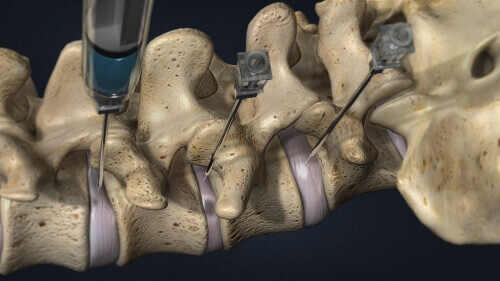Discography
![]()
Call (703) 520-1031 or use the form below to send us your contacts.

Discography, also called a “discogram” is an invasive diagnostic test that helps your doctor examine intervertebral discs of your spine and find which ones are damaged. Intervertebral discs are sponge-like cushions between the vertebrae, or bones, of the spine. Regular X-rays give only clear picture of bones, while discograms enable doctor to see the disc itself. The results of a discogram may confirm the need for a surgery, as well the exact source of pain that will help with a positive outcome of a potential surgery.
To begin, you will be asked to lie on your stomach. Before the procedure, you will receive some sedative that will help you to relax. But you will be awake to inform your doctor about your feelings during the procedure. Your back will be anesthetized with local anesthetic. The doctor will use a fluoroscope to carefully guide the needle into the targeted disk. If more the one disc is being tested, a needle is placed into each one. Next, doctor will inject a contrast dye in each disc, one at a time. The dye raises a pressure inside the discs and makes them visible on fluoroscope monitor. When this happens you may feel pressure or pain. If you feel pain, it may be a sign that the disc is diseased. Doctor will take photos of your discs with fluoroscope, so that they could be studied further.
After this procedure you may feel some minor pain for a few days, your doctor will give you some tips of how to ease the pain.
There are some potential risks of infection, bleeding, allergic reaction, and prolonged pain, but your doctor will do everything to reduce those risks.
Discography could be cervical, thoracic and lumbar – the difference is in the part of your back. Lumbar discography is the most common procedure because lumbar discs are more likely to be injured.
